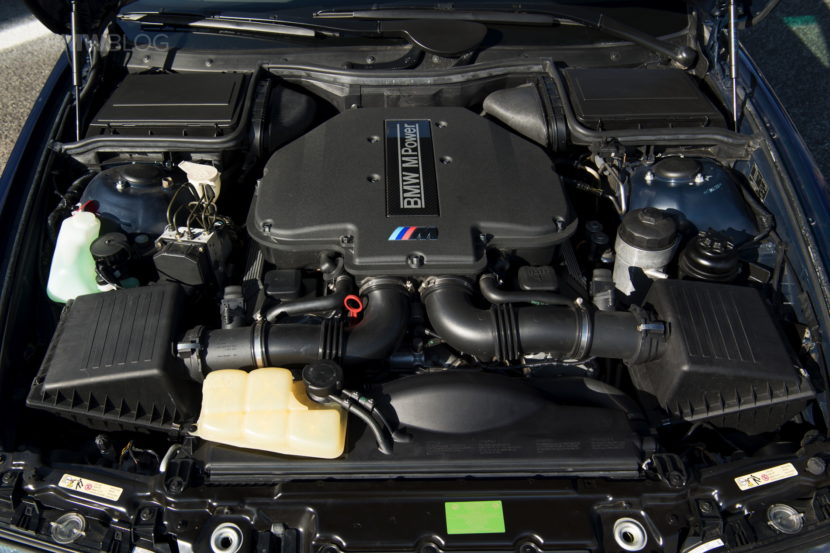Just last night, I was with a group of car enthusiast friends, all of whom own old cars, ranging from a 1957 Auto Union DKW (look it up) to a 1990 Mercedes 190E, plus me in my 1994 E36 BMW 318Ti. We were discussing what the cutoff point is for cars we want to own. Just how new is too new? For all of us, the general consensus is about 2004. That means the last of the E46 generation.
My 318Ti’s Troubles
A couple of years ago, my BMW 318Ti developed an annoying non-start fault. Sometimes the starter did nothing; other times it worked. Sometimes it could be bump started; other times not. After some head-scratching and replacing the starter (a horrible job), I made a connection between this and the fact that the central locking didn’t work.
The fault? A badly installed alarm and a loose wire to the body control module. Without a signal from the door lock to the module, the starter and fuel pump would often not work. Once repaired, I now had working locking and it has so far started every time. Not the car’s fault then.
Issues with the 2005 118d
Now, we come forward ten years to my 2005 BMW 118d. Pretty much every journey begins with the instrument cluster going crazy and the accompanying “BONG.” I have to turn it off and restart it. Sometimes the park distance warning works; normally, it doesn’t. Locating that fault would cost more in labor than the car is worth, so I just live with it. That’s 20-year-old technology, and it’s pretty much unfixable.
Thinking of running a modern BMW (or anything that Toyota didn’t make) for ten years? Good luck with that. When your 2024 BMW 5 Series G60 decides to have an electrical hissy fit, you’d best have that warranty paid up; otherwise, it might break you.
The Reliability of Older German Cars
Thirty years ago, German cars were good enough that you could confidently buy a three- or four-year-old one at auction with 100,000 miles and know that it would be both half the price of a low-miler and still be good for the same again with diligent maintenance. I’m thinking back to three examples.
Example 1: 1992 Audi 80 2.0E
One was a 1992 Audi 80 2.0E bought in 1995. Owned from new by Lloyds Bank, it had done 92,000 miles, and apart from the slight whiff of cigarettes and dull paint rectified by a good polish, it drove and felt like a new one. The SOHC 2-liter four neither leaked nor used any oil, the seats and suspension felt good, everything worked, and it was obviously made to last twenty years, which it almost did.
Example 2: Alfa Romeo 164 Twin Spark
The second was not German at all but an Alfa Romeo 164 Twin Spark with the redoubtable 8-valve Alfa twin cam, the final version of their 1954 classic. The 1991 car was four years and 110,000 miles old. Again, it had been a well-used company car with just a slightly noisy power steering pump to betray its mileage. Like the Audi, you just knew that it was good for a lot more work, and like the Audi, you never heard of any mechanical disasters.
Example 3: 1991 BMW E36 320i
Last but not least was a 1991 BMW E36, a 320i automatic with the M50 engine. Stone-chipped and with slight wear to the velour driver’s seat, this had done a whopping 160,000 miles, which meant that basically, someone had been living in it. It turns out that it was being sold by a major UK publishing house, and its one and only driver was a photographer, driving the length and breadth of the UK as well as on European jaunts.
No problem, though, because in the three months that I had it, it used no oil and still felt very solid—even the shock absorbers were still original. That one was last seen with 243,000 miles before it began a new life somewhere in the former Eastern Bloc.
The Shift in Confidence
What I’m saying is, there was that confidence that a BMW of that era could be bought with a mileage that scared off many but to me simply elicited a nonchalant shrug. It’ll be fine. Maybe I was braver back then.
I still harbor thoughts about buying something like an F10 5 Series or an F31 Touring 3 Series. But now, the landscape has changed. I know those in the trade and hear the stories, not just BMW but Mercedes and Audi, neither of whom have made a bulletproof engine in twenty years. Timing chains, injectors, NOx sensors, oil leaks, VANOS pulleys…
Modern Engine Problems
My friend Scott bought a 2013 E350 CDi that lasted a week before the number one crankshaft main bearing seized and spun in the block, destroying the engine. That’s the OM646 for you—they do that. The previous straight-four, five, and six diesels didn’t, however. They were 250,000-mile engines. The same car is due to have a badly rusted rear subframe replaced. Some Audis have reliability problems that are just unspeakable.
BMW has not covered themselves in glory either. I’m pretty sure the 2007 N47 diesel was the engine that started the madness that is the rear-mounted timing chain. Having the chain at the back by the flywheel means that to replace it, you have to take the engine out, remove the transmission, flywheel, oil pan… that’s a $2000 job if you catch it before it breaks.
The N57 is known for main bearing failure, some manual gearboxes completely and suddenly lose synchromesh on reverse gear (and occasionally second gear), plus you have what, in my opinion, is the worst four-cylinder petrol engine ever made—the 2007-13 N43 fitted to various 1, 3, and 5 Series 2.0 cars. This direct injection unit was a marvel when new—powerful with 170 bhp (no turbo either) and economical, but it didn’t take long before the Piezo injectors—at just $450 each—started misbehaving.
With time and miles came timing chain problems, bad running caused by a faulty NOx sensor, and seizure when plastic particles from the lower timing chain guides finally blocked the oil pick up. I’m looking at a photo of a dead 2013 118i Convertible right now, just 66,000 miles. Google ‘BMW N20 problems’ and you’ll discover that the engine replacing the N43 isn’t massively better. Crank thrust washer failure is pretty alarming. Buying a modern car with 100,000 miles? You’d best have a decent-sized war chest in reserve, my friend.
Why Has This Happened?
So why has this happened? Simple—it’s a combination of having to make cars as efficient as possible with as much tech as possible and all for less than a basic car cost thirty years ago. Let’s quantify that:
In 1994, a BMW 325i sedan cost about thirty thousand dollars—well, I’ve converted it from Pounds Sterling, but you get the drift. Add automatic transmission, climate control, a sunroof, leather, cruise control, electric seats, PDC, a graduated tinted screen, a decent radio, etc., and you were knocking on the door of forty grand. That’s a lot of money now, but a hell of a lot of money then—adjusted for inflation, and it comes out at… wait for it… $84,000.
It’s not quite that simple, of course, but basically, BMW, Mercedes, etc., cannot afford to make cars like they used to with so many demands from the buyers and emissions regulations.
Today’s Cars
Today’s 330i G20 is a marvelous car for sure—it drives like a dream, and even if, like me, you think it’s as ugly as sin, you can’t fail to be impressed by it. The cost? That’s $44,500 to you with a level of equipment and tech that 1994 could not have dreamed of… and how do you think they do it for what is almost a bargain price? Answers on a postcard, please.









































































